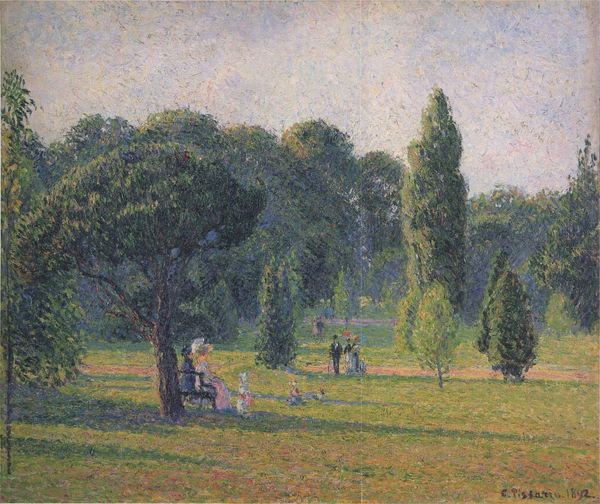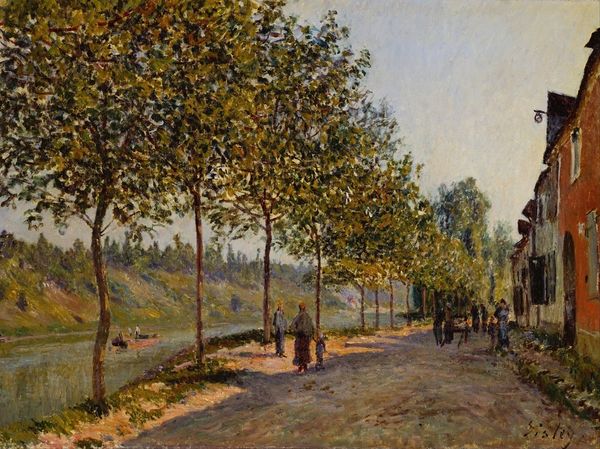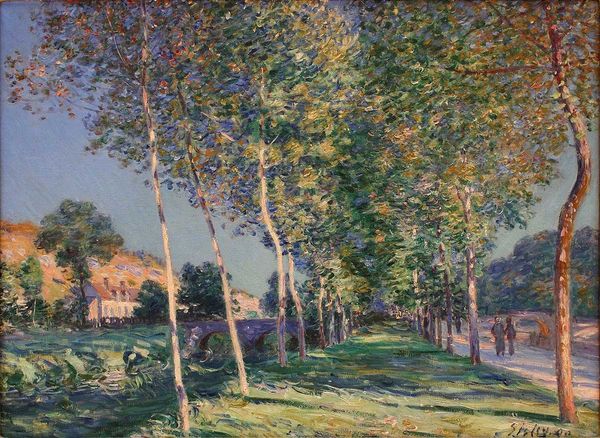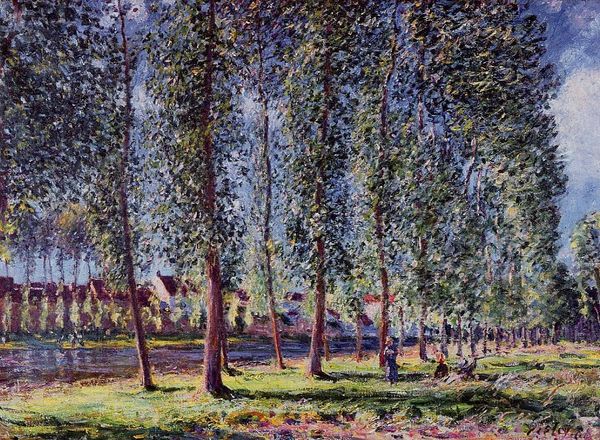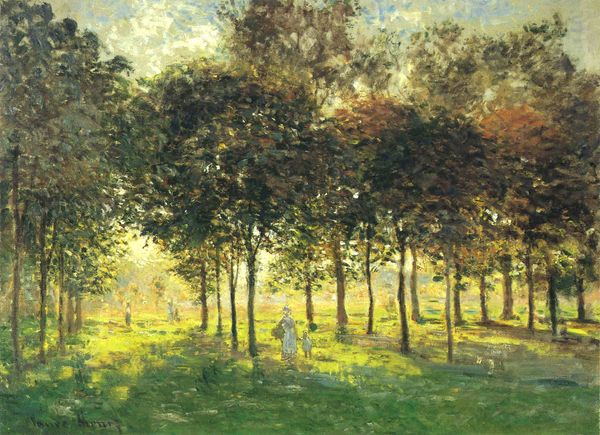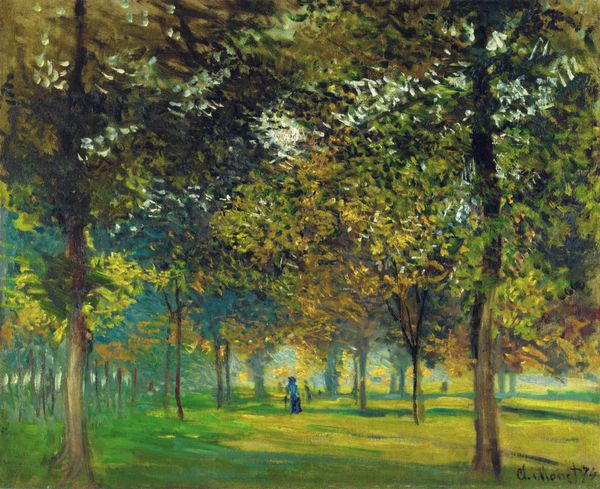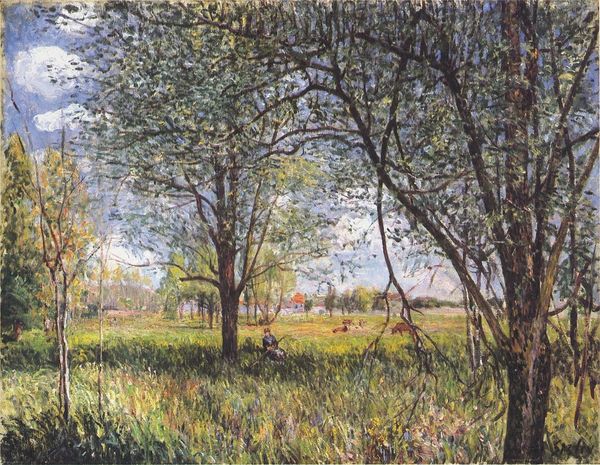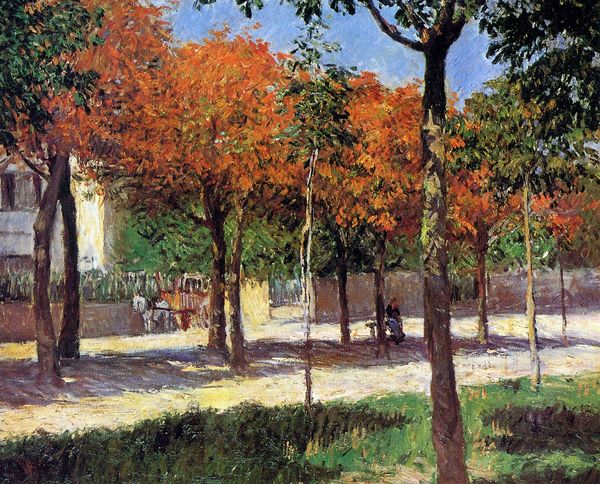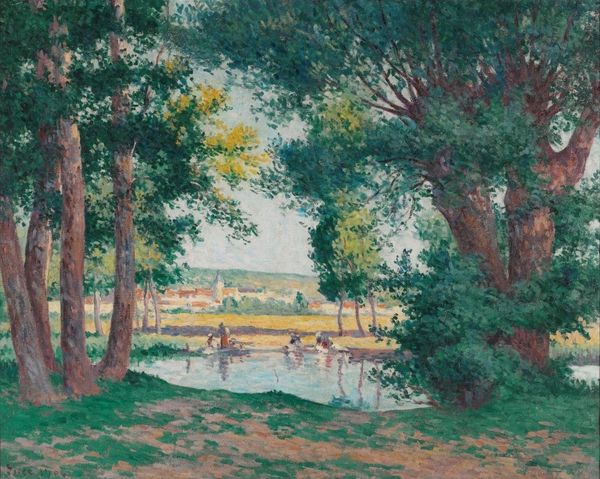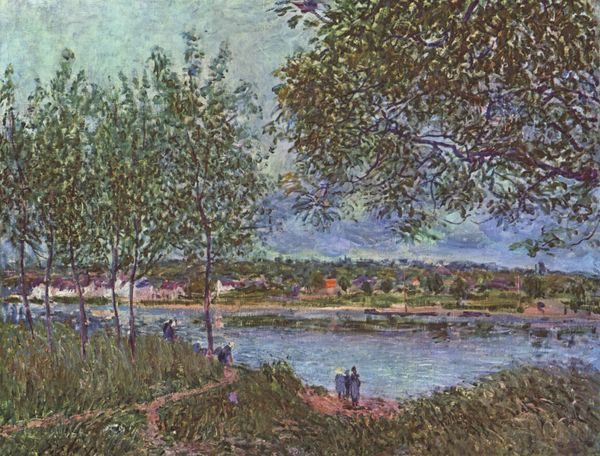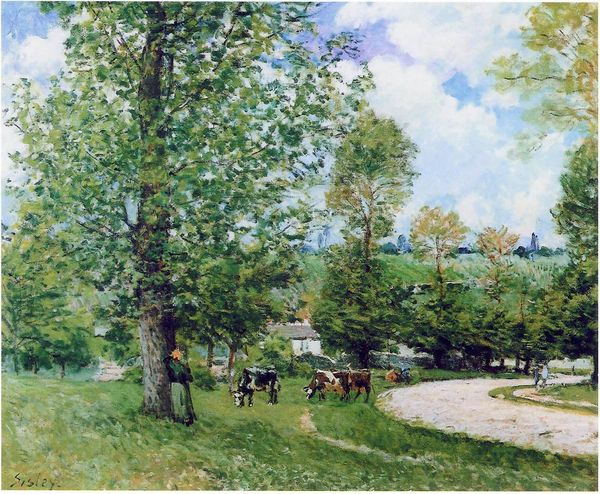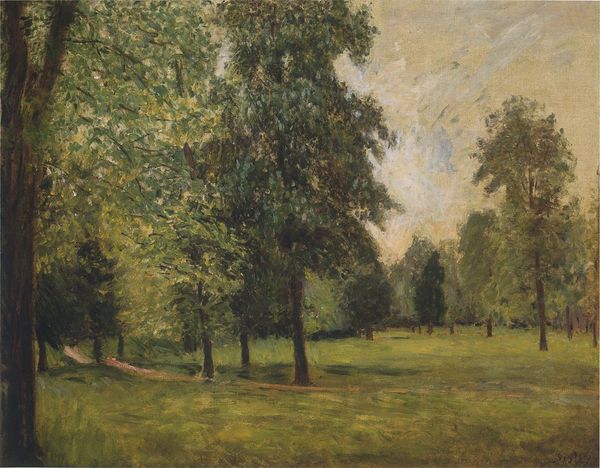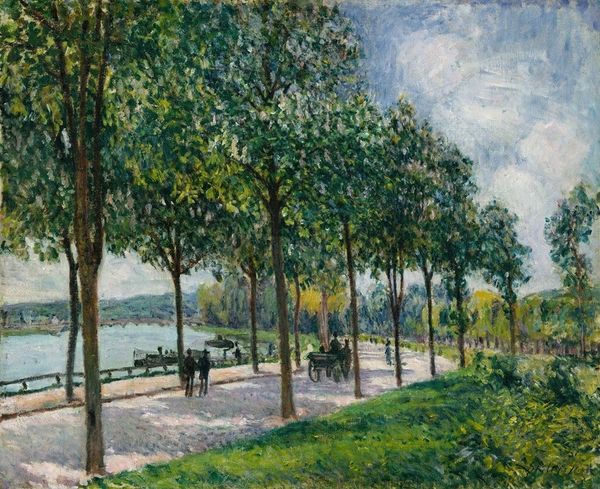
painting, plein-air, oil-paint
#
painting
#
impressionism
#
plein-air
#
oil-paint
#
landscape
#
figuration
Copyright: Public domain
Editor: Here we have Alfred Sisley's "The Forest at Boulogne," painted around 1880 using oil on canvas. The dappled sunlight filtering through the trees immediately strikes me; it feels so transient. What stands out to you compositionally? Curator: It is the systematic application of broken color that intrigues me most. Observe how Sisley employs short, juxtaposed brushstrokes of varying hues—blues, greens, yellows—to evoke the sensation of light interacting with foliage. Note that there are areas that look as though the artist is developing the work, but never resolving the representation into fixed form. Does the unfinished quality contribute to our understanding? Editor: That’s interesting. So, the lack of resolution, the visible brushstrokes, emphasize the fleeting moment, almost more than the subject itself. Does that make the composition, rather than the forest, the central theme? Curator: Precisely! Sisley isn't merely representing a forest; he's investigating the perceptual effects of light and atmosphere through paint. The composition is deliberately structured to emphasize this—note the framing devices. Sisley orchestrates space and volume through chromatic modulation, directing our gaze and subtly orchestrating an arrangement. What affect does the high horizon line have upon you? Editor: It almost feels as if I'm standing in the forest, rather than observing a depiction of it. I hadn’t considered the importance of the framing trees before. Thanks! Curator: You're welcome. It's through careful consideration of the formal elements that we can begin to appreciate the depth and sophistication of Sisley’s vision.
Comments
No comments
Be the first to comment and join the conversation on the ultimate creative platform.
